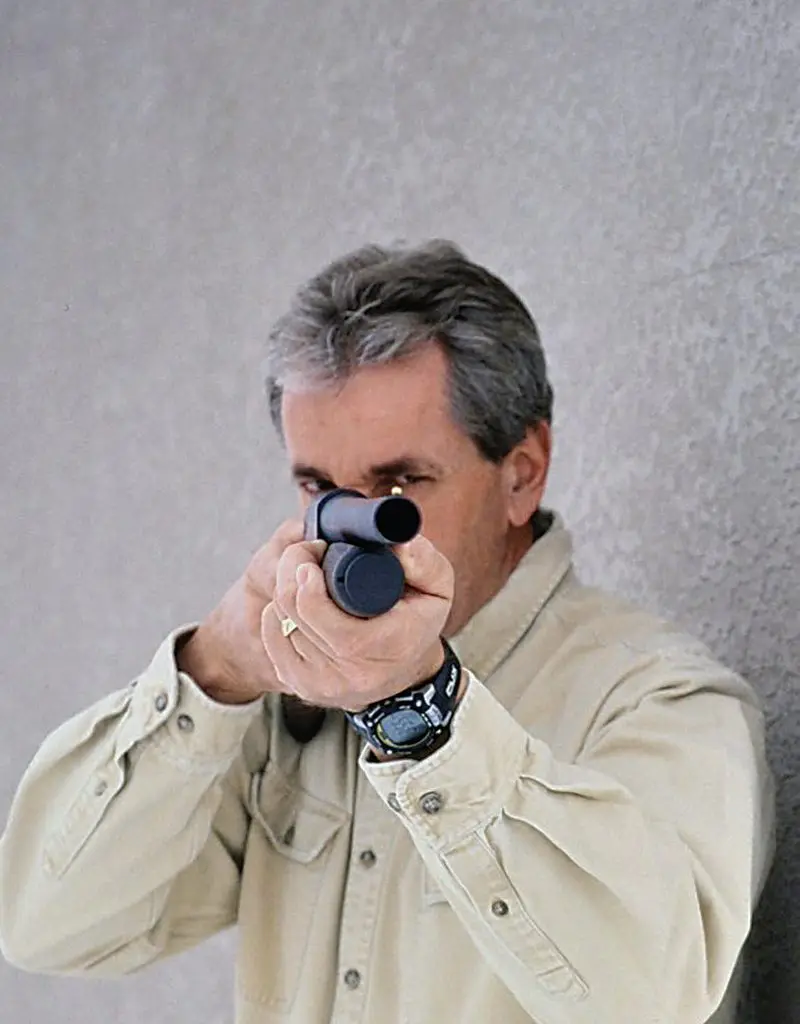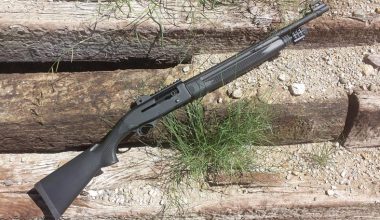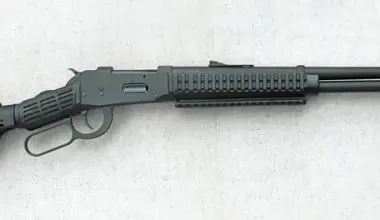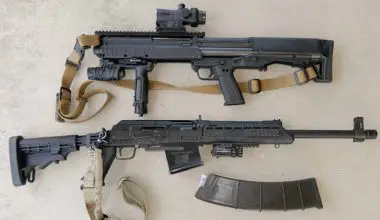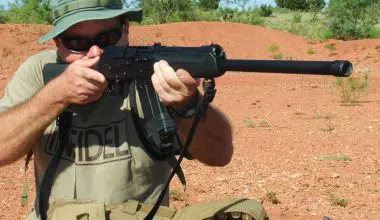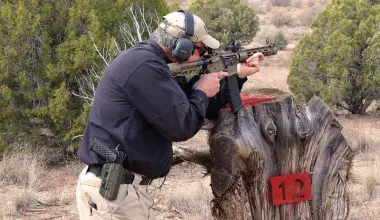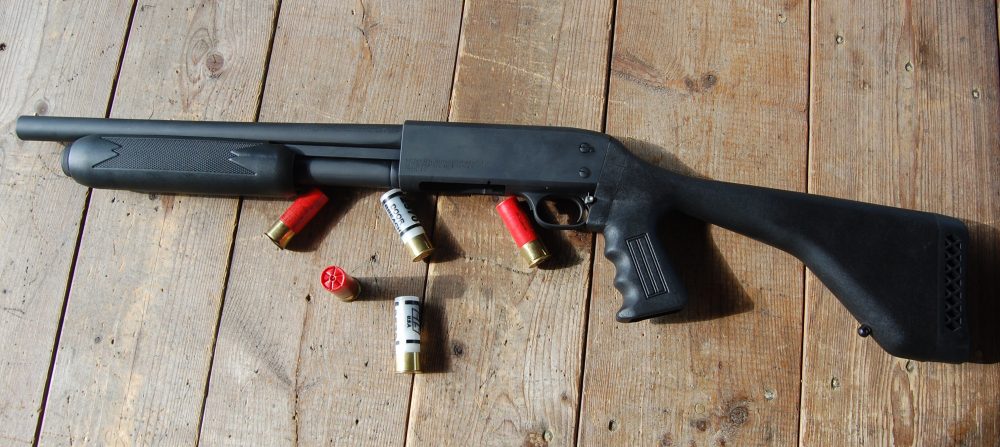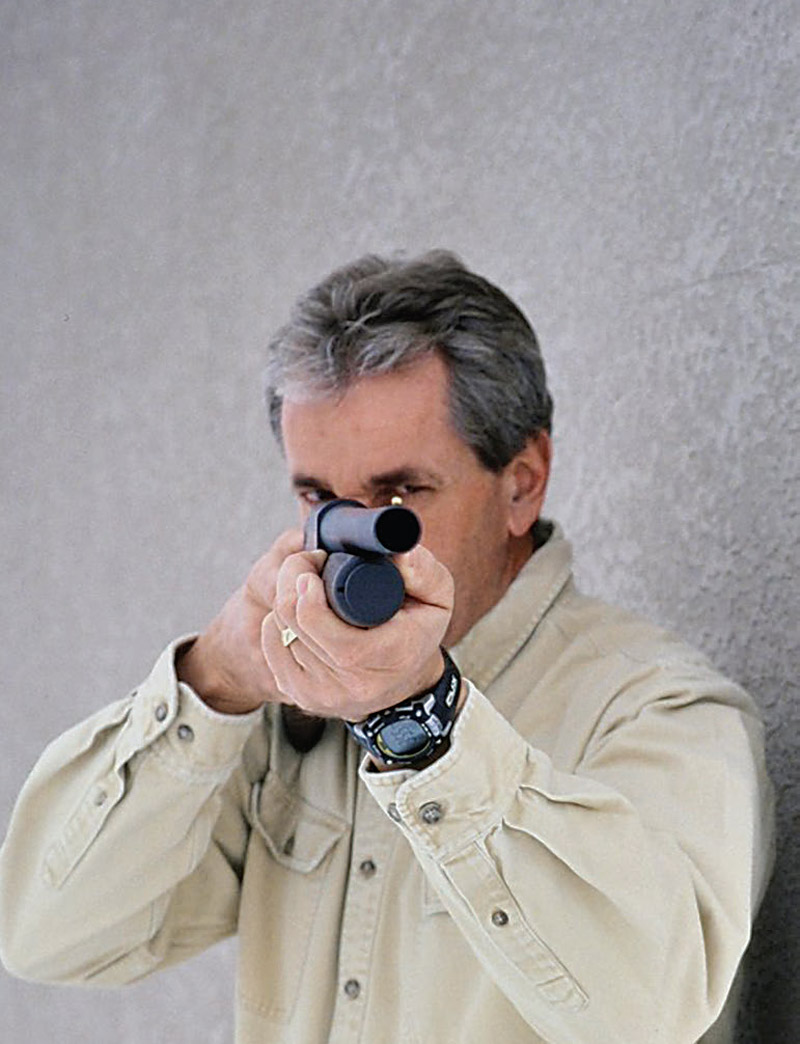
Several TV military weapon shows and some magazines have stated that the maximum effective range for 12-gauge combat shotguns with buckshot is 20 yards (60 feet), about the length of a bus.
I say horse hockey!
Before we get too far into this, I warn you of the legal ramifications of your misses regardless of who you are or why you are shooting whatever you are shooting. Each miss carries a potential legal and financial cost to you. And telling a court that a guy 40 yards away from you with a knife was a threat will not fly.
Taking this warning into consideration, let’s look at why I think the 12 gauge is a very serious fight stopper out to longer ranges not previously discussed (that I am aware of ).
Before we get into what range a shotgun can be effective at, let’s discuss the often-cited “psychological factor” a shotgun has.
According to some, shotgun intimidation is off the charts, as anyone facing one knows what that shruwunk-shruwunk pump shotgun sound means and will cringe in fear. The truth, however, is that this is a myth unto itself.
While the sound is intimidating to a reasonable person, the very fact that the shotgun is being deployed implies that you are not dealing with a reasonable person. Veteran police officers can relate stories where the sound of an action being worked actually made a bad situation worse when a subject was not intimidated in the least.
Table of Contents
HITS
Out to 100 yards (my testing), shotgun hits are greatly increased over handguns, submachine guns and semi-auto carbines under the same immediate time pressure of a gunfight. The time frame I established for reaction, shouldering, aiming and firing with the various guns, including the shotgun, was two to three seconds from the ready position.
Some will point out that a 12 gauge may well miss with some of the pellets. True, but it’s the same with rifles and handguns. Both bad guys and trained cops often spray bullets all over hell, missing with eight to 15 shots fired at eight-foot ranges—but those bullets will carry more lethal penetration much farther than buckshot.
SPEED
At longer ranges, any misses with buckshot will probably not overpenetrate through your cross-street neighbor’s walls, as will handgun and certainly rifle projectiles.
The typical 2¾-inch 12-gauge round launches about an ounce (438 grains) of lead at 1,150 to 1,350 feet-per-second (fps) from a fairly lightweight gun. That means recoil, but then again you may only get or need one shot and, in the pressure of a gunfight, you won’t feel the recoil or maybe even hear the report.
Many of our forefathers fought and hunted with .32- and .36-caliber rifled muzzleloaders, which launched a single lead ball in the 1,200 to 1,400 fps muzzle velocity range. That one lead ball easily killed and seriously wounded human opponents and big game at 100 yards. There were also many 200- and even 300-yard killings with those guns.
Both muzzleloader and shotgun buckshot loads reach 100 yards traveling about 720 fps, and in 00 and 000 the lead (shotgun .33 and .35 diameter) balls are the same size as many of the muzzleloaders of old—so much for effectiveness.
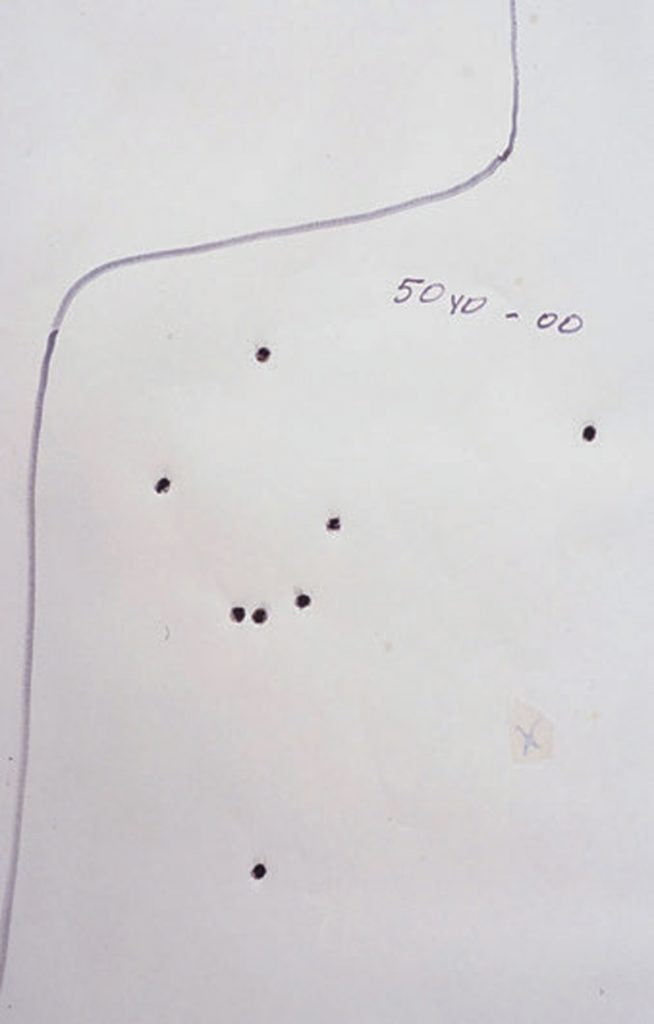
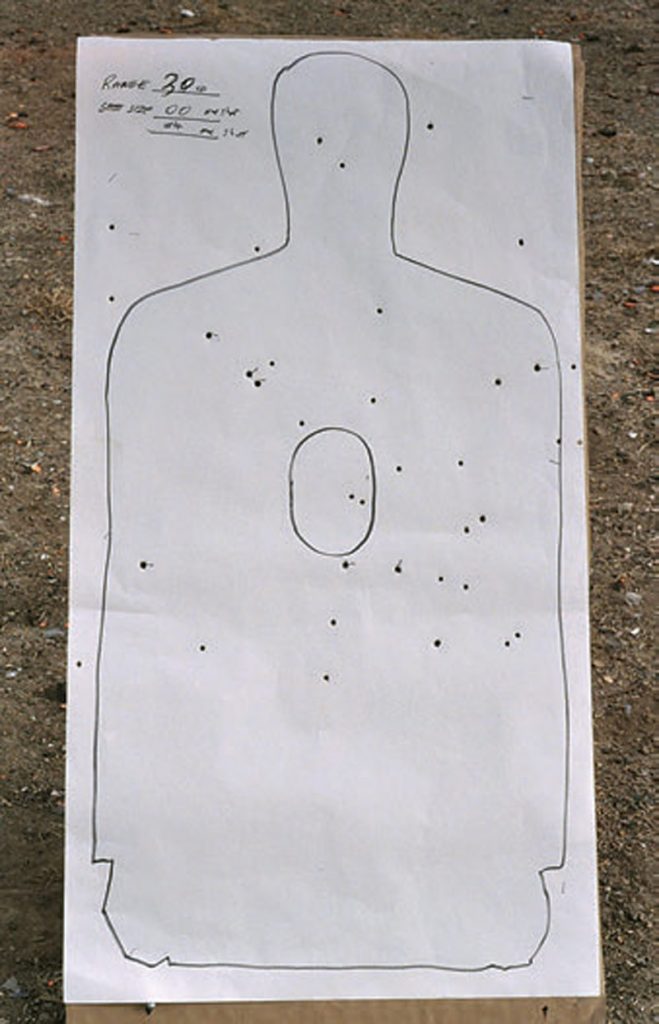
at any range out to my test maximum of 100 yards.
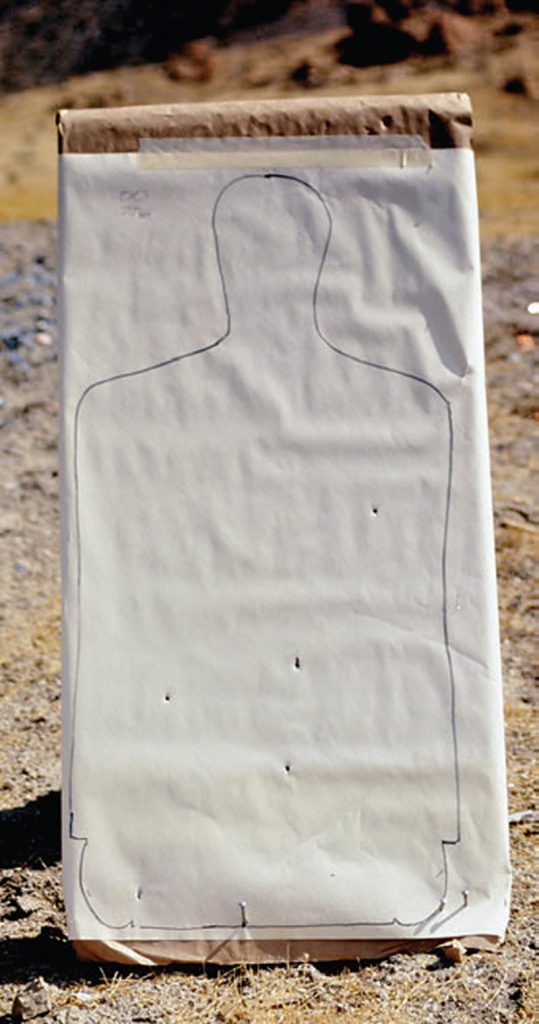
ENERGY
Let’s talk pistol combat—typically less than 25 yards. For comparison purposes, the muzzle energy from a 9mm pistol round is about 350 foot-pounds. While a single 12-gauge 00
buck ball (.33 caliber) has 170 foot-pounds of muzzle energy, a 12-gauge standard-velocity shell launches nine .33-caliber lead balls in the same shot. Do the math and you get over 1,500 pounds of potential energy.
Number 4 buck delivers about 70 foot-pounds of muzzle energy per ball—about the same as a .22 Long Rifle round—but multiply that times 27 balls and you get over 1,800 pounds of potential muzzle energy and massive wounding from just one shot! True, they won’t all hit at the same location, but they will hit close enough for government work!
Close-in hits from 12 gauges have knocked men down, blown off legs, hands, heads and arms due to the total surface impact area of a full charge hit. In the high-velocity department, Hornady has recently come out with a loading that uses eight 00 balls and has a claimed velocity of 1,600 fps.
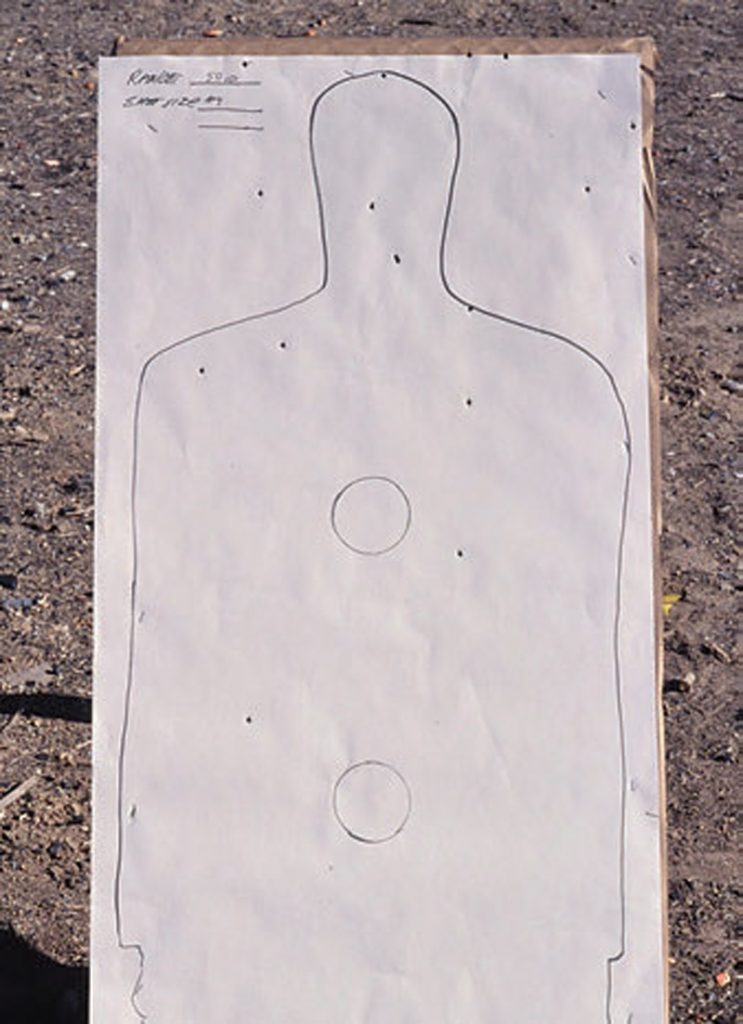
At even half the energy and if only half the buckshot hits, the 12 gauge still delivers massive damage, and each ball creates its own hole. More holes, more blood, more internal organ damage— all result in less fight much sooner. We are not shooting elephants here, but a relatively soft-skinned fragile jelly sack called humans. And when shot, most humans do realize what has happened, and that is a huge mental wound too.
Bottom line: if hit with a buckshotloaded 12 gauge, the fight usually stops very quickly.
TESTING
I used Federal’s standard load 2¾-inch shotshells in number 4 and 00 buckshot (buck), which are the most popular buck loadings. I also used the more common lower cost and more conventional wad and filler type. Stepping up to premium ammunition lines, which feature better cups and cost more, groups will be about 15 to 25% tighter than my results—which means more hits at all ranges if the shooter does his job.
I did not use slugs because they require careful aiming as does a rifle. And if you miss with a slug, there’s a much greater danger of damage to people and property due to longer range and penetration. I wanted rapid-fire quick reaction with guaranteed area saturation hits with each shot.
A typical 2¾-inch shell loaded with number 4 buck contains 27 .24-caliber balls (2¾-inch Magnum, 34 balls); 00 buck has nine .33-caliber balls (2¾-inch Magnum, 12 balls). Standard rounds are in the 1,145 to 1,350 fps velocity range, while 2¾-inch Magnum rounds step up to 1,400+ fps (excepting the Hornady 8 ball at 1,600 fps). Another consideration is that these are soft lead balls. Harder types of metal will probably give greater penetration and possibly longer range if made from a denser metal.
The guns I used were Ithaca’s Model 37 defense shotgun and a Remington 870. Both guns had 18½-inch barrels with cylinder bore chokes, which is basically little choke at all. A longer barrel or one with a choke can be expected to extend long-range effects, deliver greater lethality at shorter ranges and help get more hits, but I wanted some realworld self-defense compactness too.
I used life-sized B-27 targets and traced the target’s silhouette outline on the white backside of the target to make hits easier to see. I determined fatal hits to be hits in vital areas as per the scoring rings on the target—even though these scoring rings are very generous and have more to do with qualification scores than actual fatal hits. In real life, marginal lesser wounds can be fatal and so-called marginal fatal hits can be survived, so six of one/half dozen of the other in the hit business. The following results are typical of the outcome you can expect if you aim at center of mass with an 18½-inch barrel and like ammunition.
RESULTS
I averaged the hits and misses for several shot groups at various distances. Starting at 25 yards, number 4 buck (.24 caliber) put 23 of 27 into the scoring area, with five hits generally being fatal, 12 being serious to fatal, and six being wounds you don’t want. Double 0 buckshot (.33 caliber) had nine out of nine hits, with six averaging fatal and three bad wounds.
At 50 yards, 4 buck typically hit 16 of 27, with four fatal shots, six very serious to fatal, and the rest great bleeders. Double 0 put seven out of nine into the target, with four typically being fatal and three bad wounds. By the way, bad wounds can also mean broken bones in the arm, ribs, etc.
At 75 yards, number 4 buck averaged nine hits out of 27, with two fatal, three serious, and the other four bad news. Double 0 put four out of nine into the silhouette, averaging two fatal and two very serious wounds.
At 100 yards, 4 buck hit six of 27, with two fatal, two serious wounds, and the other two hurting like hell. Double 0 put three of nine, with one fatal and two painful bleeders to really serious.
Regardless of range, 00 can be expected to penetrate deeper than number 4 and makes a bigger single wound. But number 4 buck will get more hits. And at all ranges including 100 yards, I always got fatal hits with both 00 and 4 buck.
Back to that 75 yards: I measured the full-shot impact area, including hits and misses. Both the number 4 buck and 00 had two- to three-foot shot spreads. So at these distances in the rush of a gunfight, you can make a relatively bad shot and get hits, or make a great shot and get some misses too, but both will still be more reliable in the two- to threesecond time frame than a pistol or SMG can be at these distances except in the hands of a highly practiced shooter. And if multiple bad guys near each other are coming at you, one shot from the 12 gauge may solve that problem too.
I fired a few shots at 200 yards. Hits were lucky but they were there, and the shot spread at that distance was about eight to ten feet. At 200 yards, 00 buck arrived at about 360 to 400 fps. While not really exciting, consider getting hit by a 1/3-inch diameter lead fish sinker traveling about 370 miles per hour!
I realize that police officers and responsible gun owners will be saying, “Look at the misses!” Yes, and at these ranges, look at the misses with handguns, carbines and SMGs in very real gunfights. The difference is that a lead 00 ball will not travel or overpenetrate anywhere near what a .40, 9mm, .45 ACP, 5.56mm or .308 will, and in a rattle- battle gunfight, there will be lots of misses—there always are.
OLD-SCHOOL BALLISTIC GEL
I didn’t have ballistic gel for testing bullet penetration, so I did what many bigname gun writers did in the pre-ballistic gel days: I used two soaking-wet phone books measuring 8 x 11 inches (the approximate size of the heart area or head). I taped the books together to form a six-inch thick, heavy and seriously tough package.
At 30 yards, three out of nine 00 pellets hit the books. Penetration was 2¾ inches. And remember, this “wound” was made up of three .33-caliber holes, resulting in lots of damage. The other pellets struck nearby and created more bleeder holes.
SUMMARY
Especially for those who don’t or can’t practice much with firearms, don’t let anyone sell you short on the effectiveness and lethality of the 12 gauge. It’s an economical firearm, close-up instant fight stopper, and at reasonable rattlebattle urban distances can end the fight quickly too. It’s a firearm you’ll get hits with when under time pressure if you do your part even marginally.
Bottom line: the 12 gauge is a serious fight stopper well past the ranges the “experts” say it is.
